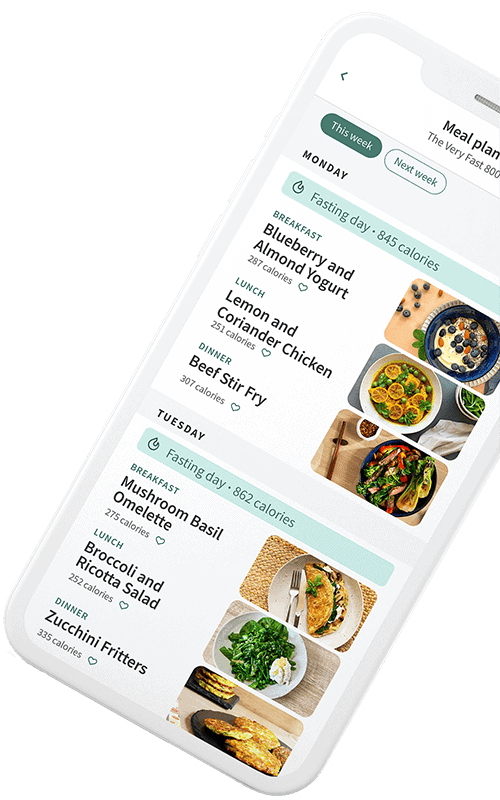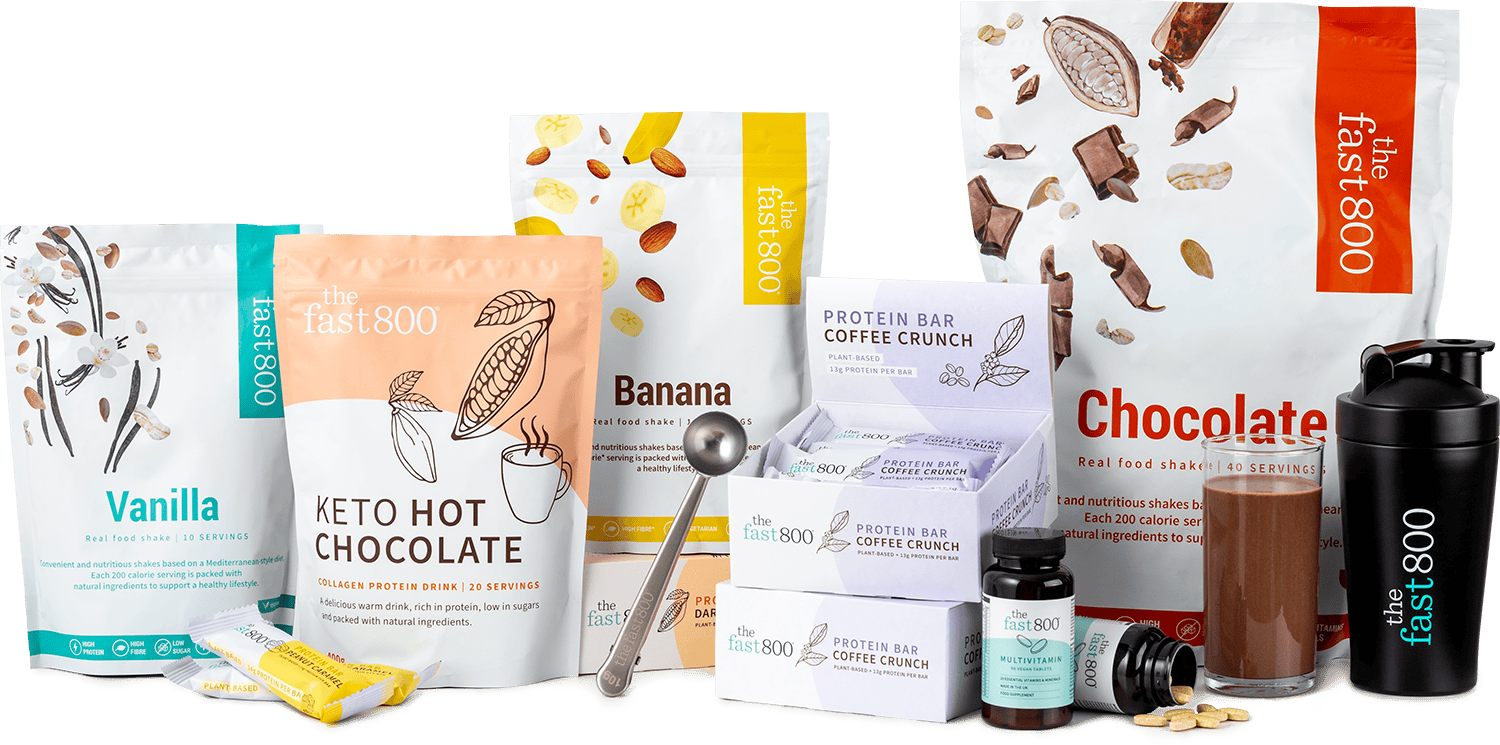High fibre foods to add to your diet
We can’t shout enough about the importance of including high fibre foods in your diet. It is essential for a happy gut and a healthy body, providing a vast amount of health benefits from protecting you against certain cancers and type 2 diabetes, to reducing digestive disorders like irritable bowel syndrome, ulcerative colitis and Crohn’s disease.[1][2][3] It’s for this reason that it’s vital to include high fibre foods into your diet every single day.
But what are the best high fibre foods to eat? Well, that’s where we come in: just keep reading to find out.
How much fibre should you eat per day?
Less than 10% of most Western populations consume adequate levels of dietary fibre and whole fruits, with the typical intake being around half the recommended levels.[4]
We recommend consuming approximately 30g of soluble and insoluble fibre every day. This will ensure you’re feeding the ‘good’ bacteria in your gut enough fibre for them to play their crucial roles in your gut. Among the aforementioned health benefits, fibre fights constipation, boosts heart health and aids weight loss by helping keep you full.
Naturally, a Mediterranean-style diet is rich with high fibre foods, which is one of the reasons it’s known to be one of the healthiest eating patterns. Whether you’re following this diet or not, it’s still important to keep track of how much fibre you’re consuming, which is where meal planning and programmes like The Fast 800 can come in handy. With lots of high fibre recipes at your fingertips, it’s easy to ensure you’re hitting daily nutritional targets like 30g of fibre, to support your gut health.
Top 5 high fibre foods
Fibre is essentially an indigestible carbohydrate found in the cell walls of vegetables, fruits and whole grains, so it goes without saying that these are the kinds of foods you need to be eating.
That said, some foods are higher in fibre than others, so these are some of the top high fibre foods to include in your diet:
- Avocado
You may know this berry (yes, avocados are technically a giant berry with a single seed) to be a source of healthy fats. It may come as a surprise that avocados are also a fantastic source of fibre. In fact, one avocado (150g approx.) contains around 10g of fibre, which is a third of your daily recommended intake. - Beans
We don’t just mean your classic baked beans here: chickpeas, kidney beans, edamame beans and butter/lima beans are all brilliant sources of fibre. While navy and white beans are the most fibrous, it’s beneficial to include any type of bean in your diet. They’re delicious to add to salads, make for a hearty soup and are a great meat substitute in a veggie curry. One cup (approx. 170g) of kidney beans can provide just over a third of your daily fibre requirements and chickpeas pack 4.7g fibre in just 100g portion.
- Oats
100g of whole rolled oats packs in almost 10g of fibre, including a powerful soluble fibre called beta-glucan. Beta-glucan partially dissolves in water and forms a gel-like solution inside your gut. It has been associated with reduced cholesterol levels, blood sugar management, increased growth of good bacteria in the digestive tract, and regulation of type 2 diabetes.[5]
Oats are excellent for breaking a fast, due to the beta-glucan delaying the time it takes your stomach to empty of food, leading to being fuller for longer.
- Pears
Pears are a delicious and nutritious food for satisfying a sweet tooth. They contain around 6g fibre per medium-sized, raw pear, and contain a variety of vitamins and minerals. Pears are a source of both soluble and insoluble fibre which assist with maintaining bowel regularity, and their high pectin content has been associated with improved gut health and immune function.
Aside from all their gut benefits, pears are also high in folate, niacin and provitamin A, all important vitamins for cellular function, energy production, supporting skin health and wound healing.[6][7][8] - Seeds and nuts
Nuts like pistachios and almonds, and seeds like chia, flax and sunflower seeds are tiny packages of fibre and nutrients. While nuts are high in protein, they are also very fibrous. For example, almonds contain around 7-8g of fibre per 100g. Seeds contain all the necessary materials to develop into mature plants, so it goes without saying that they contain a complex array of nutrients. Chia seeds, for example, contain almost 10g of fibre in just a 28g serving (roughly two tablespoons). Mix them into smoothies or sprinkle over Greek yoghurt to boost your fibre that day.
High fibre recipes
Now you know some of the top high fibre foods, here’s a few of our favourite ways to enjoy them as part of a tasty, fibre-rich meal:
- Saag with Chickpeas: This delicious recipe takes just 30 minutes to prepare from start to finish, and though it’s under 300 calories it packs over a third of your daily recommended fibre per portion. It’s ideal for a fasting day dinner and for preparing in advance.
- Spicy Chicken Bowl with Kimchi: This recipe is the ultimate gut-friendly dish. It features fermented and high fibre food, both of which support digestive health. Each portion contains 8.2g of fibre and can be enjoyed as part of a keto diet.
- Chocolate Protein Porridge: Porridge is a great way to start a non-fasting day, and this one provides almost half your daily protein in just 10 minutes. Perfect for a sweet tooth and a healthy gut!
So there you have it, the top high fibre foods for a healthy gut and body, and a few of our favourite ways to use them.
We know it can be a challenge to stay on top of your fibre intake every day, which is why we have developed our Programme to help keep track of your macronutrients and ensure you’re getting the most out of your food. Try it out, and find hundreds more fibre-rich recipes, here.
For hundreds of high fibre recipes, workouts and a supportive online community to help you achieve your health and weight loss goals, why not try the Programme (now available as an app) with a 7-day free trial? Get started today!
START YOUR 7-DAY FREE TRIAL
Di Sabatino A, Morera R, Ciccocioppo R, Cazzola P, Gotti S, Tinozzi FP, Tinozzi S, Corazza GR. Oral butyrate for mildly to moderately active Crohn’s disease. Aliment Pharmacol Ther. 2005 Nov 1;22(9):789-94. doi: 10.1111/j.1365-2036.2005.02639.x. PMID: 16225487.
Scheppach W, Sommer H, Kirchner T, Paganelli GM, Bartram P, Christl S, Richter F, Dusel G, Kasper H. Effect of butyrate enemas on the colonic mucosa in distal ulcerative colitis. Gastroenterology. 1992 Jul;103(1):51-6. doi: 10.1016/0016-5085(92)91094-k. PMID: 1612357.
Dreher ML. Whole Fruits and Fruit Fiber Emerging Health Effects. Nutrients. 2018 Nov 28;10(12):1833. doi: 10.3390/nu10121833. PMID: 30487459; PMCID: PMC6315720.
Cicero AFG, Fogacci F, Veronesi M, Strocchi E, Grandi E, Rizzoli E, Poli A, Marangoni F, Borghi C. A randomized Placebo-Controlled Clinical Trial to Evaluate the Medium-Term Effects of Oat Fibers on Human Health: The Beta-Glucan Effects on Lipid Profile, Glycemia and inTestinal Health (BELT) Study. Nutrients. 2020 Mar 3;12(3):686. doi: 10.3390/nu12030686. PMID: 32138344; PMCID: PMC7146517.
Naderi N, House JD. Recent Developments in Folate Nutrition. Adv Food Nutr Res. 2018;83:195-213. doi: 10.1016/bs.afnr.2017.12.006. Epub 2018 Feb 2. PMID: 29477222.
Gasperi V, Sibilano M, Savini I, Catani MV. Niacin in the Central Nervous System: An Update of Biological Aspects and Clinical Applications. Int J Mol Sci. 2019 Feb 23;20(4):974. doi: 10.3390/ijms20040974. PMID: 30813414; PMCID: PMC6412771.
Zinder R, Cooley R, Vlad LG, Molnar JA. Vitamin A and Wound Healing. Nutr Clin Pract. 2019 Dec;34(6):839-849. doi: 10.1002/ncp.10420. PMID: 31697447.











